The Church of Puylaurent |
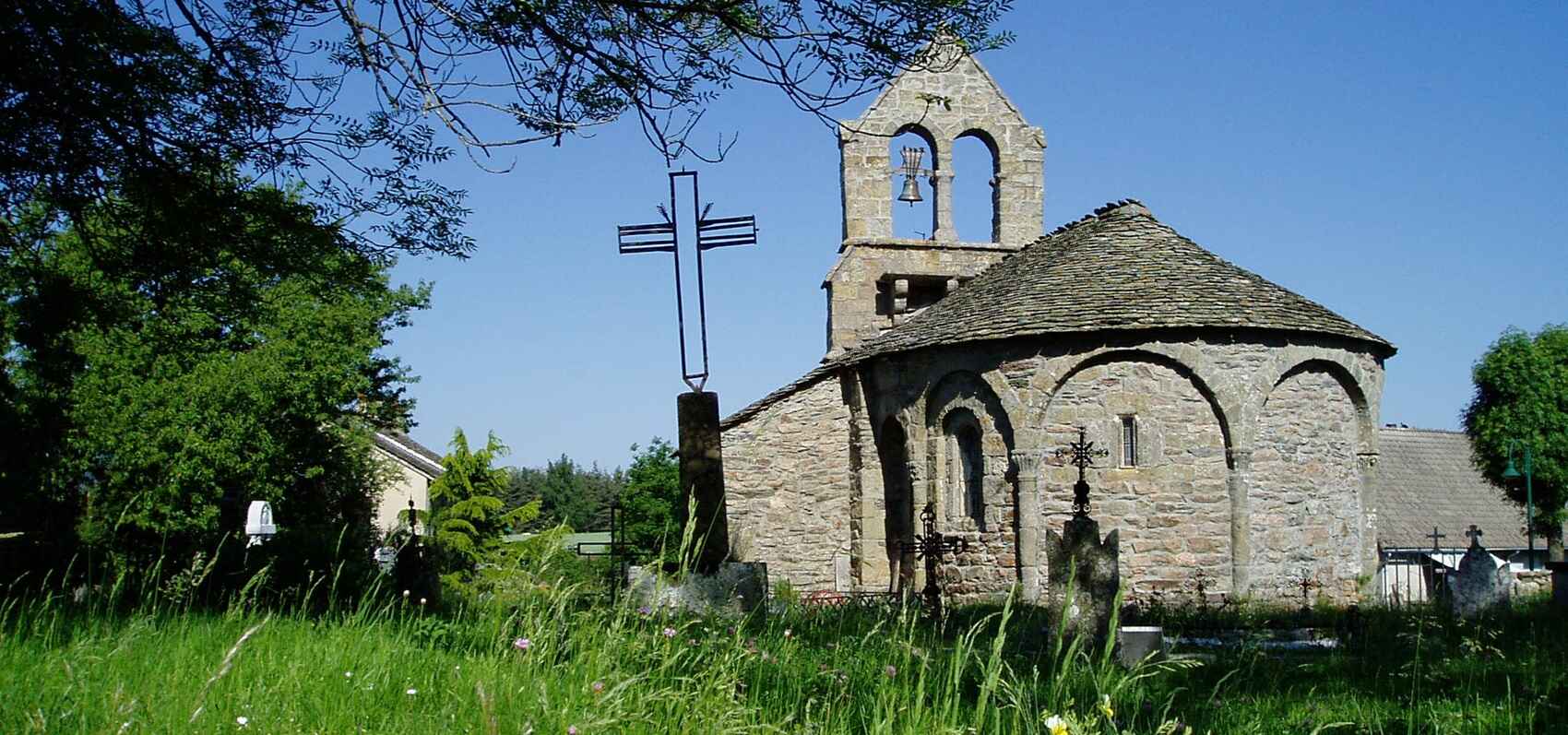
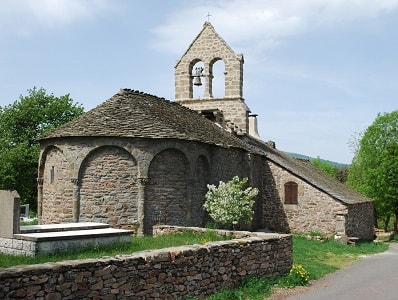 A Jewel of Historical and Architectural Heritage
A Jewel of Historical and Architectural Heritage
The church of Puylaurent, firmly anchored in the cultural and historical landscape of the region, is an emblematic monument that testifies to the richness of its past. Well consolidated, it is ready to withstand the centuries to come. The presbytery, inspired by restoration, retains its old charm and regains precious stability. Inscribed on the supplementary inventory of historical monuments, the church attracts a growing number of visitors each year, fascinated by its architecture and history.
Architecture and
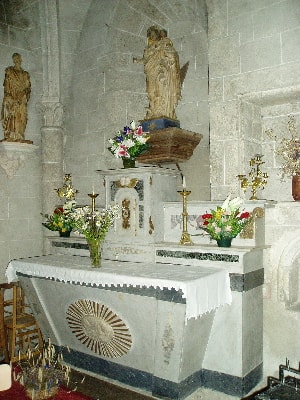 The church features a six-sided apse adorned with an arcade composed of semicircular arches, resting on corner columns with capitals worn by time. The portal, with three plain semicircular arches, opens onto the nave from the south. The bell tower, of wall type with two openings, adds to the harmony of the ensemble. Inside, the nave, vaulted with a slightly broken barrel vault, is divided into two bays and is characterized by the absence of direct lighting, enhanced by decorative arcades that contribute to its sacred atmosphere.
The church features a six-sided apse adorned with an arcade composed of semicircular arches, resting on corner columns with capitals worn by time. The portal, with three plain semicircular arches, opens onto the nave from the south. The bell tower, of wall type with two openings, adds to the harmony of the ensemble. Inside, the nave, vaulted with a slightly broken barrel vault, is divided into two bays and is characterized by the absence of direct lighting, enhanced by decorative arcades that contribute to its sacred atmosphere.
The broken triumphal arch, which projects into the nave, rests on paired columns, creating an elegant transition to the apse. Although slightly narrower than the nave, it presents a semicircular shape and is adorned with an arcade of six semicircular arches supporting a cul-de-four vault. The lighting is provided by small narrow windows, recessed inside, which bring soft and diffused light into the space.
The richly carved capitals of the church represent motifs of succulent leaves, figures, and linear designs, adding a touch of finesse to the architecture. The thick tailloir that overhangs the paired capitals of the triumphal arch is also adorned with sculptures, testifying to the craftsmanship of the artisans of the time. Furthermore, a modern chapel, vaulted with ribbed vaults and illuminated by a window, has been built in the first bay on the south side, providing a stylistic contrast while enriching the whole.
The human history of the region dates back to protohistory, although the earliest dwellings have left few traces. The Thort estate, a vestige dated between 1800 and 2100 BC, is one of the rare witnesses of this era, often referred to as the "Palet de Gargantua." Ancient documents mention the names Puylaurent and Saint-Laurent-du-Fraisse, hinting at a rich local history.
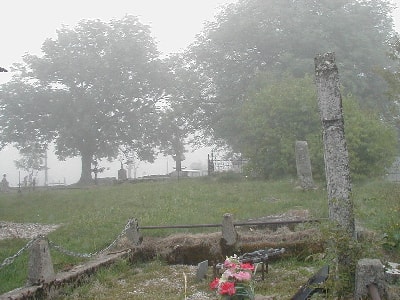 Over the centuries, many authorities have come and gone, from the distant king to bishops, as well as powerful lords such as the Randons of Châteauneuf, and later the Randons of Luc, who would become the "Polignac." The castle, already mentioned in 1265, has left its traces in the historical landscape. As for the parish, it likely dates back to the 10th or 11th century, fitting into the framework of many other parishes in the country.
Over the centuries, many authorities have come and gone, from the distant king to bishops, as well as powerful lords such as the Randons of Châteauneuf, and later the Randons of Luc, who would become the "Polignac." The castle, already mentioned in 1265, has left its traces in the historical landscape. As for the parish, it likely dates back to the 10th or 11th century, fitting into the framework of many other parishes in the country.
A priory of Benedictine monks, established in Prevencheres and a branch of the abbey of Saint-Gilles, was associated with Puylaurent, creating lasting ties between the two localities. These deep roots in the past are inseparable from the identity of the church.
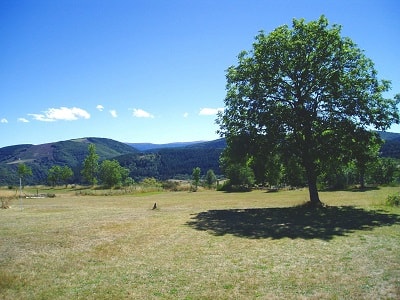 The church of Puylaurent plays a central role in the spiritual life of the community. It hosts religious services, including masses, baptisms, weddings, and funerals, thus becoming an important gathering place for the inhabitants. Additionally, the church is often the setting for cultural and community events, strengthening the social fabric of the locality and providing opportunities for celebration and reflection.
The church of Puylaurent plays a central role in the spiritual life of the community. It hosts religious services, including masses, baptisms, weddings, and funerals, thus becoming an important gathering place for the inhabitants. Additionally, the church is often the setting for cultural and community events, strengthening the social fabric of the locality and providing opportunities for celebration and reflection.
Located in the Cevennes, a mountainous region known for its natural beauty and cultural heritage, Puylaurent enjoys a picturesque environment that enhances the appeal of its church. The combination of its exceptional architecture and enchanting setting makes it a popular destination for both locals and visitors.
The hamlet of Puylaurent, nestled in the Cevennes, benefits from a rich and varied natural environment that contributes to its charm and appeal. The fauna around Puylaurent is diverse and represents a rich ecosystem. In the forests, it is not uncommon to encounter deer, wild boar, and a variety of small mammals such as foxes and martens. Birds are also omnipresent, with species such as the kestrel, owl, and various songbirds that populate the skies and underbrush. The surrounding rivers and streams, such as the Chassezac and the Allier, harbor a diversity of aquatic life, including trout, crayfish, and other fish species. This aquatic environment also attracts many water birds and insects, contributing to the region's biodiversity.
Mushroom foraging is a popular activity around Puylaurent. Nature enthusiasts often embark on explorations of the forests, drawn by the promise of discovering edible species while enjoying the beauty of the landscapes. Foraging typically occurs in early autumn when climatic conditions favor the growth of mushrooms. Foragers, often armed with wicker baskets and identification guides, traverse the underbrush in search of porcini, chanterelles, and other delicious varieties.
Former holiday hotel with a garden along the Allier, L'Etoile Guest House is located in La Bastide-Puylaurent between Lozere, Ardeche, and the Cevennes in the mountains of Southern France. At the crossroads of GR®7, GR®70 Stevenson Path, GR®72, GR®700 Regordane Way, GR®470 Allier River springs and gorges, GRP® Cevenol, Ardechoise Mountains, Margeride. Numerous loop trails for hiking and one-day biking excursions. Ideal for a relaxing and hiking getaway.
Copyright©etoile.fr